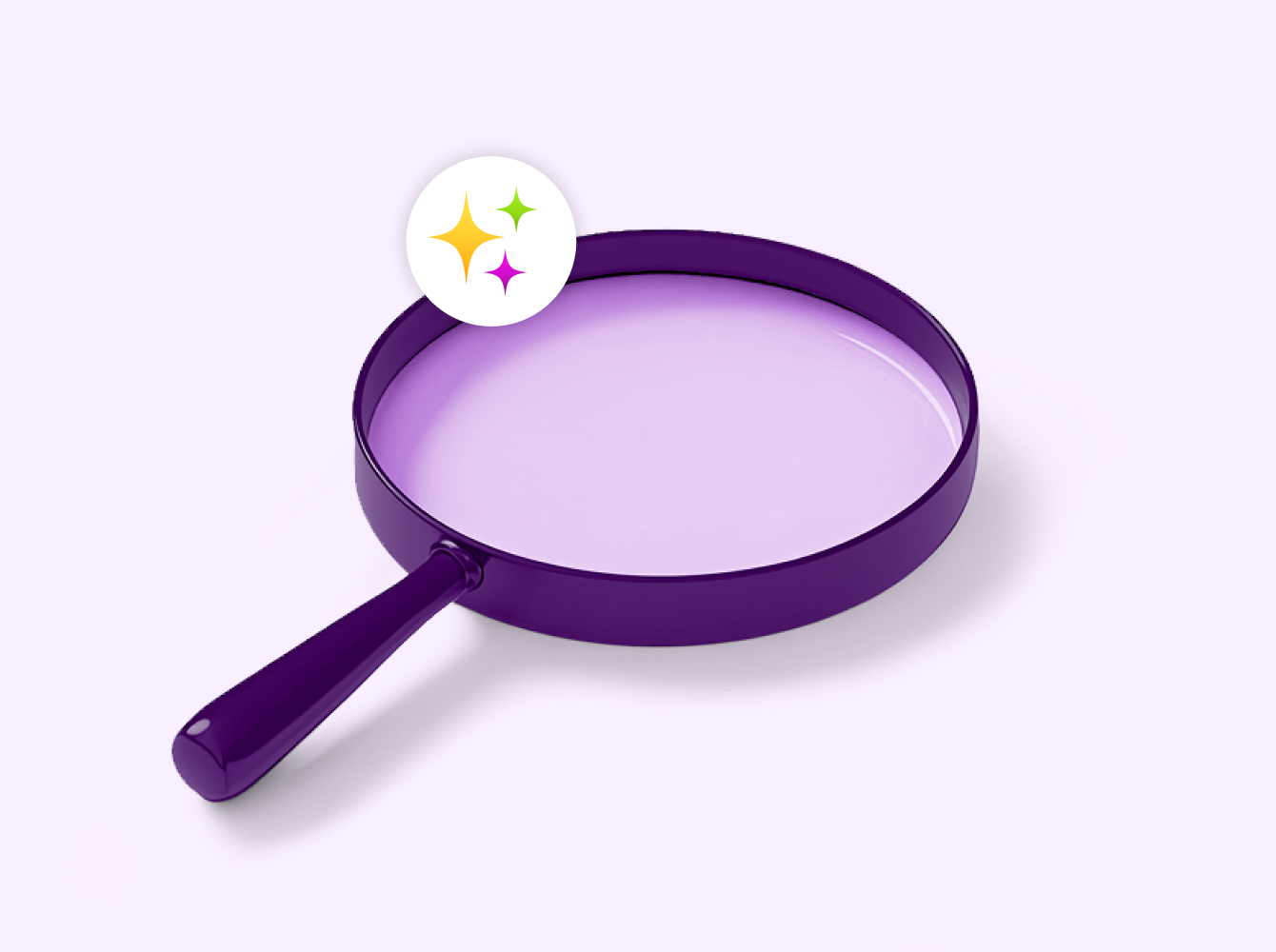人事(HR)は、従業員エクスペリエンスを支える重要な柱です。採用から入社、そして熟練社員に至るまで、実質的な成果を上げるため、多くの人事チームが Slack を活用しており、部門を横断した連携、リソースの共有、そしてエンゲージメントの向上を 1 つの場所で実現しています。
24%
Slack の使用によって実現した、従業員が生産性を最大限発揮するまでの時間の短縮率
5.9%
Slack の使用によって従業員満足度が上昇
89%
Slack がチームの連帯感アップに役立っていると実感しているユーザーの割合
さらに明快なコミュニケーション
効率的な社内コミュニケーションのために Slack を活用する方法を学びましょう
チャンネル
今日の採用担当者と同僚たちが期待しているのは、業務コミュニケーションにおける洗練された最新のアプローチであり、メールや電話会議といった従来型のコラボレーションツールでは力不足です。Slack チャンネルを使用して、リアルタイムでコミュニケーションを取りましょう。そうすれば、あらゆる段階で従業員、マネージャー、その他の関係者と最新情報を共有できます。
チャンネルの例 :
- #人事チームチャンネルは、チームのメンバーが採用戦略について話し合ったり、トレーニングプログラムを調整したり、関連する法律や規制への準拠を確認したりするための専用スペースになります。
- 面接を受ける各個人に対して #採用-[役職名]プライベートチャンネルを作成し、マネージャーと人材管理担当者が採用プロセス全体を一元管理できるようにします。面接官全員と関係者が面接時のメモ、フィードバック、履歴書にアクセスでき、また面接官が欠席する場合の連絡も行えます。
- #自己紹介や #歓迎といった全社的なチャンネルを作成し、新しい従業員を紹介し、つながりをよりすばやく築くのを助けましょう。また、カスタマーサクセス、セールス、マーケティングなどの各チーム向けにも、より小規模な「#歓迎」チャンネルを作成できます。もちろんこのチャンネルでは、新入社員がシャム猫を 3 匹飼っているとか、スキューバダイビングの認定を受けているといった、楽しい小ネタを共有することも推奨されています。
- #報酬プライベートチャンネルは、マネージャーが現在と将来の従業員の報酬について話し合い、承認する場になります。#オファー-田中一郎-csm や #昇進-田中一郎-csm のように、各個人に 1 つ作成するようにしてください。
- #人事-社内通知チャンネルでは、オープンエンロールメントの期限、パフォーマンスレビュータスク、会社全体のポリシー変更などについて全員に通知します。
#育児、#lgbtq、およびその他の従業員リソースグループ(ERG)チャンネルは、さまざまな背景を持つ人々がサポートを受け、つながりを築くための場所になります。インクルーシブな文化を築くため、従業員に自分が共感する ERG に参加したり、ERG を新しく設立したりすることを奨励しましょう。 - #ペットや#スポーツといったチャンネルは、従業員が趣味や関心を共有できる楽しいスペースになります。

よく使うチャンネルにはスターをつけておきましょう。サイドバーの一番上にピン留めされるため、見つけやすくなります。サイドバーを整理しておくには、セクションを作成して、似たようなチャンネルをグループにまとめましょう。例えば、採用ニーズ、昇進、DM、チームチャンネルやプロジェクトのためのセクションを作成できます。
チャンネルを作成する方法についてもっと詳しく。
プライベートチャンネルとパブリックチャンネルの比較
プライベートチャンネルは全メンバーには公開されていないため、機密情報とコミュニケーションを安全に保てます。プライベートチャンネルに新規メンバーを追加できるのは、そのチャンネルの既存メンバーのみです。また、投稿されたメッセージまたはファイルを検索できるのは、そのチャンネルのメンバーのみです。次のような目的に適しています。
- 採用についての話し合い
- 報酬についてのレビュー
- 昇進についてのレビュー
- ERG(メンバーのみ)
パブリックチャンネルはすべてのメンバーに公開されているため、透明性とインクルージョンを確保するのに優れています。ワークスペースのメンバーなら誰でも表示と参加が可能なため、誰でもそこで共有されたメッセージとファイルを検索できます。パブリックチャンネルは次のような目的に適しています。
- 新規採用者の自己紹介
- 一般的な人事関連の社内通知
- ソーシャルチャンネル
- ERG に対するアライのサポート
チャンネルを作成する時に、パブリックにするかプライベートにするかを決定します。ただし、必要に応じていつでもチャンネルを変換できます。プロジェクトや採用期間が終了したらチャンネルをアーカイブして、全員の Slack ワークスペースを整理整頓された状態に保ちましょう。チャンネルは読み取り専用に変換されますが、内容は引き続き検索できます。アーカイブされたパブリックチャンネルは誰でも検索できますが、アーカイブされたプライベートチャンネルを検索できるのはチャンネルのメンバーだけです。
Slack プロフィール
リモート環境やハイブリッドワーク環境では、コンテキストがとても重要であり、組織内のさまざまな場所にいる新しいチームのメンバーと働く場合は特にそう言えます。大規模な仮想会議では、長年勤務している従業員でさえ、「あれは誰だったかな」と思う場合があります。詳細な Slack プロフィールは、従業員が適切なコンテキストの中で適切な人とすばやくつながり、コラボレーションするのに役立ちます。
管理者の協力を得て、組織の全メンバーにプロフィールフィールドを追加します。次のようなフィールドを追加できます。
- 連絡先情報 : チームのメンバーが連絡方法を把握できるように、複数のメールアドレスと電話番号を追加します。
- 名前の発音 : チームのメンバーの名前を正しく発音すれば、相手を尊重し、評価していることが伝わります。ユーザーは自分の名前の発音を録音したり、発音表記を追加したりできます。
- 使ってほしい代名詞 : 自分が希望する代名詞を追加するよう全員に奨励することで、インクルーシブな文化を築きましょう。メンバーの Slack プロフィールにマウスを重ねると、ホバーカードにその人が希望する代名詞が表示されます。
- 現地時間と勤務場所 : 従業員に現地時間と勤務場所を追加(リモート、ハイブリッド、オフィス勤務を含む)するよう勧め、それぞれがどのようなタイムゾーンと環境で働いているかを同僚が把握できるようにします。また、タイムゾーンを自動的に設定する項目の横にあるチェックボックスをオンにすれば、移動中もタイムゾーンが更新されます。高度な Tip : 誰かと対面で会えるようにするには、Slack のステータスを「🏢 オフィス」に更新しましょう。
- 組織図 : Enterprise Grid プラン、または Slack Atlas アドオンつきのビジネスプラスプランをご利用であれば、組織図を作成することで、従業員が組織の階層構成を簡単に把握できるようになります。SCIM または Web API を使用して managerId フィールドを更新すると、組織図が自動的に入力されます。

Slack Atlas を使用して組織のプロフィール機能を拡張する方法についてもっと詳しく。
採用から従業員の研修に至る過程の効率化
応募追跡システムを統合する
よい第一印象を与えようと努力しているのは応募者だけではありません。募集する側も努力しています。優秀な人材の獲得競争がかつてなく激しくなる中、効率的で迅速、かつ最新の採用プロセスは、他社との差別化要因になります。
応募追跡システムを統合すれば、ネイティブのデスクトップアプリケーションやブラウザのタブ間の切り替え時間を短縮でき、適切な人材を確保するための採用プロセスを進める時間を増やせます。次のようなインテグレーションを使えば、採用過程のあらゆるフェーズで応募者と関係者に最新情報を知らせることができます。
- Greenhouse : 承認、新規応募者、新しい紹介、仲介業者からの情報提供、スコアカードの期限など、採用に関する通知をユーザーまたは特定の Slack チャンネルに直接送信できます。採用通知の承認や却下を Slack 内で直接処理することもできます。
- Lever : Lever アプリから Slack に詳細な通知をプッシュすることで、チーム全員が採用プロセスの全体に関与できます。有望な新規応募を共有したり、面接官にフィードバックを残すようリマインドしたり、現地で応募者との計画を変更したり、ほかにもさまざまなことができます。
- Recruitee : 応募者、採用パイプライン、採用チームの活動に関する通知により、各フェーズで何が起きているかを把握できます。関係者が応募者をフェーズ間で移動させたり、フィードバックや評価を残したりした時に通知を受け取ることができます。

採用関連のインテグレーションを網羅したリストをご覧ください。
求人の投稿
求人の投稿には多くの労力がかかります。複数の関係者からの意見をまとめる必要があります。#採用-マーケティング-ディレクターのように、募集する役職のプライベートチャンネルを作成して、新しい人材の検索をスピードアップしましょう。採用マネージャー、部門責任者、採用担当者をチャンネルに追加して、全員が業務範囲、給与範囲、役職、職務内容について話し合えるようにします。共同で職務内容を作成したら、チャンネルに投稿してピン留めし、後で簡単に参照できるようにします。

求人がオンラインに掲載されたら、最初の面接のタイムラインについて話し合いましょう。全員の意識を統一するために、canvas(しっかりと構成されたコンテンツを作成して共有できるスペース)を活用できます。採用プロセス中に達成すべき重要なマイルストーンのチェックリストまたはタイムラインを作成しましょう。関係者は、チャンネル右上にある canvas ボタンにマウスポインタを重ねることで、いつでも情報を確認できます。
応募者を審査する
応募が届き始めたら、#採用-求人-職種プライベートチャンネルで関係者から最初のフィードバックを集めましょう。新しい応募があった時にチャンネルで直接アラートを受け取るために Greenhouse アプリを統合すれば、資格を満たした応募者を見逃すのを防ぐことができます。
関係者は応募者について互いに話し合い、面接候補のリストを早めに決定できます。次に、スレッドを使用して、リストした各応募者についての体系的なディスカッションを作成します。スレッドを使用すると、採用プロセス進行中にフィードバックを適切に記録し、各応募者について話し合った内容を簡単に検索可能な状態にできます。
面接を調整し、関係者からのフィードバックを収集する
複数の関係者のスケジュールに合わせた面接を設定するのは、決して簡単なことではありません。チャンネルを使用すれば、面接の調整が容易になります。時間の候補を記載したメッセージを送信し、関係者には色分けされた絵文字を使って簡単に返信してもらうことで、どの時間枠が全員にとって都合がよいかを判断できます。
面接が確定したら、関係者全員にリマインダーを設定します。高度な Tip : リマインダーの時間は、必ず面接の前日または 30 分前に設定しましょう。

面接前に応募者の応募書類やその他の情報を確認する時間が取れるようにするため、指定された時間になると Slackbot がチャンネルのメンバー全員に通知を送ります。
また、採用に特化した Lever などのアプリを使用し、要約カードを使って Slack の中で直接、関係者に今後の面接を通知することもできます。面接後には、Lever から面接官にフィードバックの送信を促すことができます。これには、応募者の簡単なスコア評価と、書面による詳細なフィードバックの両方が含まれます。
ドキュメントを整理する
履歴書から応募レター、評価シートに至るまで、採用プロセスでは追跡すべきドキュメントが山ほどあります。重要なドキュメントは採用チャンネルの上部にピン留めして整理し、必要な時にすぐ見つけられるようにしておきましょう。
また、canvas を使用してパーソナライズされた応募者情報のハブを作成することもできます。各応募者の名前を追加し、履歴書、評価シート、その他の重要なドキュメントを 1 か所に添付します。canvas を列に配置して、採用のタイムラインやその他の応募者情報を体系的に整理することもできます。
研修
内定通知に署名したら、新入社員の初日が始まります。次のことを実践して、初日から新入社員を積極的に参加させ、早く仕事に慣れてもらい、自分がチームのメンバーとして大切にされていると感じられるようにしましょう。
- #自己紹介チャンネルや#全社チャンネルで歓迎しましょう。全社またはチームのチャンネルで新規採用者を紹介して、新人たちが居心地よく感じるようにし、ほかのチームメンバーとも交流できるようにします。
- 各期の新入社員グループに専用のチャンネルを作成しましょう。そのような固有のチャンネル(例 : #新入社員-25年9月)によって、互いに助け合うプライベートなミニコミュニティが形成されます。よくある質問、重要なドキュメント、およびその他の情報をそのチャンネルの上部にピン留めすれば、よくある質問への回答を新人たちがすばやく見つけられるでしょう。
- 関連チャンネルに招待しましょう。新入社員を、プロジェクト、顧客アカウント、将来的に働く可能性のある部門などのチャンネルに追加します。これにより、新入社員はそれぞれのチャンネルを閲覧したり検索したりして、自分のペースで各チャンネルのピン留めされた投稿、ファイル、チームメンバー、会話を確認できます。
- メッセージの自動送信スケジュールを設定しましょう。新入社員が業務を円滑に進められるよう、GreetBot を使用してメッセージの自動送信スケジュールを設定できます。自動メッセージを送信して、手順を共有したり、チェックインのスケジュールを設定したり、福利厚生の申請を促すリマインダーを送信したり、同僚との新しいつながりを促進したりできます。
- 新入社員研修テンプレートを使用すると、新入社員研修に必要なすべての重要な情報を含む、すぐに使えるチャンネルを作成できます。このテンプレートには、研修ガイド、最初の 1 週間のチェックリスト、研修のバディといった情報がアクセスしやすい 1 つの場所にまとめられており、詳細をいくつか追加するだけで完成します。

従業員に人事関連のセルフサービス機能を提供する
Slack を使って従業員のサポートを自動化し、効率化する方法
人事情報とヘルプチャンネル
#人事-社内通知や #人事-ヘルプのようなチャンネルは、重要なポリシーや最新情報を全員に周知するために使用されます。チャンネルの canvas には、次のような重要なドキュメントや情報をピン留めまたは追加するようにしてください。
- 従業員ハンドブック
- 一般的な医療 / 歯科 / 生命保険プランの補償
- 401(k)退職金制度
- オープンエンロールメントのガイドラインと締め切り
- 報酬と業績評価のガイドラインおよび締切日
従業員がピン留めされたリソースでは質問の答えを見つけられなかった場合は、Slack の検索機能を使用するように勧めてください。従業員がすぐに参照できるよう、チャンネルの canvas にはよくある質問を閲覧専用モードで追加しましょう。そして、さらにサポートが必要な場合は、簡単に問い合わせられるようにしておきます。フォームが完成したら、リンクをコピーしてチャンネルの上部にピン留めすることで、従業員が簡単に見つけられます。
従業員福利厚生ガイドテンプレートを活用できます。定義済みの領域に情報を入力すれば完成する canvas が用意されているので、情報を整理する負担を軽減して、業務を効率化できます。
有給休暇申請、承認、給与明細へのアクセスなどを自動化する
人事ツールを Slack に直接組み込むことで、人事に負担をかけることなく従業員が個人の重要な事務を処理できます。ADP バーチャルアシスタントを統合して、次のことができるように従業員をサポートしましょう。
- 休暇申請を作成する
- 最新の給与明細を表示する
- 休暇の現在の残り日数を確認する
- 退職金残高を表示する
- 有効な福利厚生の登録状況を表示する

有給休暇申請が承認されると、従業員には自動的に通知が届きます。ほかにも、会社独自のニーズを満たすためのインテグレーションがいくつかあります。人事に欠かせない次のようなツールをお勧めします。
- Workday : Slack 内でパーソナライズされたダッシュボードを使用して、75 種類のクイックアクションで重要なタスクを実行できます。休暇申請の送信、有給休暇の残り日数確認、同僚についてのフィードバックの送信、一緒に仕事をする人の検索などが可能です。
- AttendanceBot : 従業員が、病欠の連絡、休暇の申請、出退勤時刻の記録、休日カレンダーの作成、その日の欠勤者確認を従業員が Slack から離れずに実行できるようにします。
- BambooHR : 休暇の残り日数、休暇の申請、従業員名簿、不在者情報など、BambooHR で最も人気の機能を Slack から直接利用できます。
従業員エンゲージメントを向上させる
Slack を活用して従業員のエンゲージメントを維持し、毎日全力で仕事に取り組めるようにする方法
オープンオフィスアワー
ハイブリッド環境やリモートワーク環境で、誰かがデスクの前を通りかかったり、コーヒーバーに立ち寄ったりした時に発生する何気ないやり取りを再現することは困難です。ただし、Slack を使用すると、こうした仮想環境でのソーシャルな交流を促進できます。オープンオフィスアワーを設定し、誰でもチャンネルにアクセスしてサポートを求めたり、新入社員に会ったり、週末の予定について話したりできるようにしましょう。マネージャーとチームリーダーの全員に対し、Slack 上でのビデオまたは音声のみの会話であるハドルミーティングを使用して、毎週または月に 1 回、同じ時間にオープンオフィスアワーを主催するよう勧めます。
開始したハドルミーティングには、チャンネル内の誰でも参加できます。トピックを追加したり、ライブ字幕をオンにしたり、ハドルミーティングにテーマを設定したりできます。
Donut アプリインテグレーションを使えば、廊下での偶然の出会いをデジタルオフィスでも再現できます。Donut は、Slack のダイレクトメッセージを使ってチームメンバーのペアを自動的に組み、バーチャルで顔を合わせてコーヒーを飲みながら話すよう促します。

もちろん、同僚と実際に対面することに勝るものはありません。ハイブリッドワークの従業員がいる企業では、オフィスのデスクリクエストとスケジュールも Slack 内で管理できます。Scoop アプリインテグレーションを使用すれば、全員がオフィスにいる時間を調査し、一緒に仕事をする人たちの出社予定の概要を確認し、全員が顔を合わせるのに最適な時間を設定できます。Robin アプリはデスクリクエストの処理に最適です。また、Semana を使用すると、ハイブリッド環境で働く人全員の勤務スケジュールを同期できます。
オフィス管理アプリを網羅したリストを参照してください。
感謝や称賛を伝えるチャンネル
同僚と毎日顔を合わせていないなら、自分の仕事が評価されているかどうかがわかりにくい場合があります。#称賛チャンネルや #功績に乾杯チャンネルのように感謝や称賛を示すためのチャンネルを使って、お互いを認め合う健全な文化を作りましょう。毎週金曜日にリマインダーを設定しておき、プロジェクトの完成や大型取引の成立に貢献した個人やグループに対して従業員が感謝のメッセージを送るよう促すことができます。
社内でお互いを認め合う気持ちをさらに高めるには、次のアプリインテグレーションをチェックしてみてください。
- HeyTaco : 毎日、全員に 5 つの仮想タコスが配布用として配られます。従業員は、感謝の気持ちを表し、すばらしい成果を祝うために、相手に(メッセージ経由で)タコスを贈ることができます。
- PeerFives : ポイントベースのシステムを使用したシンプルなワークフローによって、ほかの人の努力を認める気持ちを簡単に表現できます。従業員は、一定のポイントが貯まると、PeerFives のマーケットプレイスで楽しい賞品と引き換えることができます。
- Dankon : 従業員は、美しいサンキューカードを Slack 内で直接ほかの人に送信できます。カードの色をカスタマイズし、楽しい絵文字を追加して、一緒に仕事をする人たちの一日をさらに楽しくしましょう。
エンゲージメント調査を定期的に実施する
採用、研修、有給休暇申請、その他さまざまなタスクをこなす中で、従業員のエンゲージメントを常に把握しておくのは簡単ではありません。幸い、Slack を使用すれば、すでに業務をこなしている環境の中でエンゲージメントのレベルを簡単に追跡できます。
Polly を使用して、従業員向けに 1 つまたは複数の質問からなる次のようなアンケートを作成できます。
- 毎日のスタンドアップ・ミーティング
- 全社ミーティング中の質疑応答
- 四半期ごとのチェックイン
- 週次または月次のエンゲージメントチェック
すばやく結果が得られ、回答をリアルタイムで確認できます。また、わかりやすいダッシュボードでデータにアクセスできます。
絵文字のカスタマイズ
絵文字は、楽しみながら仕事を進めるためのすばらしい方法です。Slack ワークスペースにはあらかじめ絵文字パックが用意されていますが、企業独自の絵文字も簡単に作成でき、絵文字の活用をさらに一歩進めることができます。
従業員が会社の絵文字ライブラリに絵文字を追加することを奨励しましょう。また、絵文字作成者の権限を制限し、ワークフロービルダーを使用してフォームリクエストを作成することで、絵文字作成のプロセスを形式化することもできます。
最初に、絵文字作成者の権限を管理してから、絵文字リクエストフォームを作成します。フォームには、使用する画像(形式の要件を含む)や命名規則(例 : #チームワークでドリームワークを)などの関連フィールドを含めます。フォームのリンクを、必ず適切なチャンネルの上部に固定してください。#全社チャンネルや #企業文化チャンネルなど、すべての従業員がアクセスできるパブリックチャンネルをお勧めします。フォームが送信されると、管理者がリクエストを承認して新しい絵文字を作成します。特定の要件を満たしていない場合や、会社のポリシーに違反している場合は、リクエストを拒否できます。
絵文字を使って仕事を効率化する方法をさらにご覧ください。
もっと詳しく知りたいですか?
Slack は、あなたとチームが採用活動をスピードアップし、意識を統一し、エンゲージメントを促進して会社の成長に貢献できるよう支援します。Slack を最大限に活用する方法については、ヘルプセンターをご覧ください。










